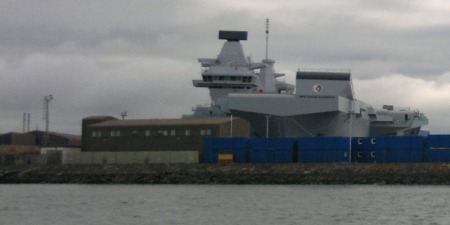
Last time out on our Macwester Malin, our Max Power CT35 bow thruster started making a noise like a handful of memory sticks in a blender. After taking advice and running some diagnostics I concluded that the drive leg was the most likely suspect.

With this in mind I spoke to A R Peachment, the very helpful Max Power UK main dealer and as they only had the CT45 spare part in stock, I opted for that. They explained that the only difference between the CT35 and the CT45 is that the 45 has two propellers; the electric motor is the same spec.
The drive leg is an oil-filled sealed unit, so once it’s broken it needs to be replaced. Complete with two propellers that added-up to just short of £500. ‘Fiddlesticks!’ I thought; that’s an unexpected expense that I could have done without on the run up to the holidays.

Over the next few days I familiarised myself with the installation instructions, and spent a few hours going through the process, but stopped short of removing the existing drive leg until I was sure I understood the challenges. As part of the dismantling and re-assembling the component parts, I found a small amount of polypropylene was wrapped around the shaft of the defunct drive leg, and I wondered whether that might have caused the failure.

Having purchased some CT1 to seal the gasket on the basis that it can cure underwater, and given that I planned on swapping the drive leg, anti-foul the tunnel, drive leg and propellers between tides …I was ready to go as soon as the tide started to fall.
Once I had freed all of the bolts, I used a wooden bung and a mallet to nudge the old drive leg free of the hull. I then headed down into the mud to sand down the tunnel before painting it with fresh antifoul and fitting the replacement part. I should have foreseen that the old gasket was likely to disintegrate, and removing it from the underside of a tunnel that’s knee-high was a lengthy, back-breaking task. Actually fitting the drive leg was easy enough, however there was no way of knowing which way to fit the part, as both shafts/propellers were identical. I reasoned optimistically that I had a 50:50 chance of getting it right.

Unfortunately while there is little technical difference between the CT35 and the CT45, there is a difference in installation. The CT35 motor has to be installed offset to the tunnel (to keep the single propeller in the centre), and the CT45 has to be centred. This meant that after converting from the 35 to the 45 configuration, the starboard propeller occasionally protruded from the tunnel by about 5mm when rotating. With this in mind I trimmed about 5mm off the propeller where this occurred. Not ideal, but repositioning the motor wasn’t an option between tides, and I will have to think long and hard about the pros and cons of centring the motor during the winter ashore.

Having reassembled all the parts and waited 24 hours for the CT1 to fully cure, I eventually tested the new drive leg. It was 100% successful… … …apart that is from the 50:50 chance of fitting the drive leg the right way …which rather inevitably turned out to be 100% wrong.

I spent further time looking at diagrams, reading the installation instructions and researching online, before I swapped the brown and blue wire leading to the control panel and that fixed the problem.

While the process took me much longer than it would have taken an engineer, an engineer’s time would probably have cost around £500, and they would probably have wanted the boat to be lifted in and out of the water to do the job, which would have cost another £500. So all in all, I guess that fixing the issue myself (while upgrading from the Max Power CT35 to the CT 45) saved around £1000.
If you’re thinking about tackling similar remedial DIY work, there was nothing technically challenging in the process, but it is important that you start as soon as the tide drops, ensure that you have all of the required components and tools …and have a plan B should things not go to plan while the tide is out.















